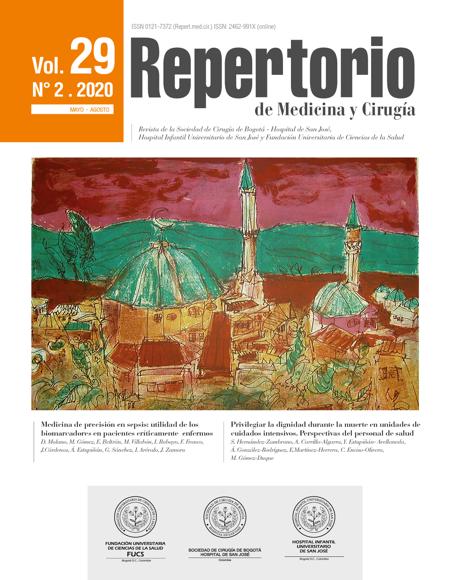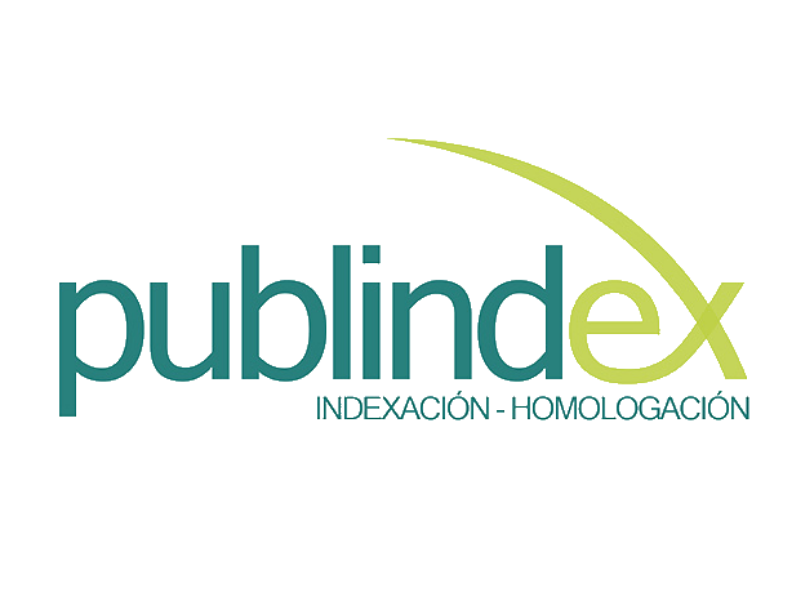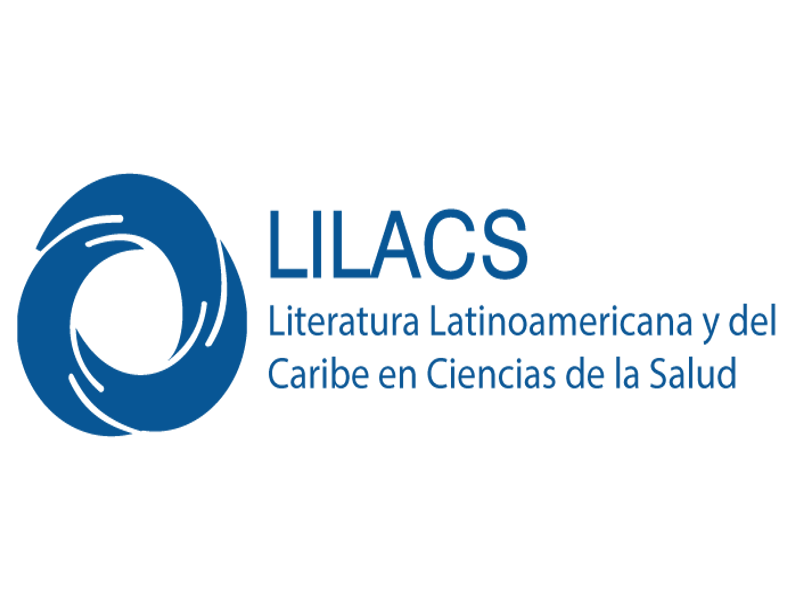Medicina de precisión en sepsis: utilidad de los biomarcadores en pacientes biomarcadores en pacientes críticamente enfermos
Precision medicine in sepsis: usefulness of biomarkers In critically ill patientsbiomarkers In critically ill patient
Cómo citar
Descargar cita
Esta obra está bajo una licencia internacional Creative Commons Atribución-NoComercial-CompartirIgual 4.0.
Mostrar biografía de los autores
Durante años la evolución del cuidado intensivo ha intentado ofrecer una atención basada en protocolos y paquetes de manejo agrupados por patologías y cuadro sindromáticos. Aunque se logró disminuir la mortalidad en diferentes patologías (sepsis y síndromes coronario agudo y de distrés respiratorio agudo), no se han resuelto por completo los problemas clínicos, en especial el diagnóstico y el manejo. Una nueva opción ha surgido en el horizonte denominada “medicina de precisión”, entendida como estrategia de prevención y tratamiento que tiene en cuenta la variabilidad individual. La sepsis es un síndrome con múltiples aristas en cuanto al fenotipo y genotipo, cuyo diagnóstico temprano es relevante para los desenlaces clínicos. Hasta el momento el enfoque principal ha sido la identificación de un germen etiológico para diferenciarla del síndrome de respuesta inflamatoria sistémica (SIRS). En los últimos años el paradigma en enfermedades infecciosas ha cambiado debido a estudios que demuestran como la respuesta inmunitaria del paciente séptico tiene un papel clave en el desarrollo de la enfermedad, con implicaciones en el diagnóstico, pronóstico y tratamiento, que podrían ayudar a cambiar el abordaje en los próximos años gracias a una estrategia basada en medicina de precisión. Hoy los aislamientos microbiológicos y los cultivos siguen siendo el estándar de referencia con varias desventajas como el tiempo para obtener resultados, sobre todo en infecciones por gérmenes resistentes u hongos, que pueden retrasar el inicio de la terapia antimicrobiana. Como alternativa se ha planteado el uso de biomarcadores en sepsis que siendo productos de la respuesta inflamatoria del individuo ante la infección, son útiles para el diagnóstico y pronóstico primordialmente en los críticamente enfermos. Decidimos realizar esta revisión narrativa acerca de la utilidad de los biomarcadores en pacientes con sepsis críticamente enfermos, para enfocarlos en un modelo de medicina personalizada.
Visitas del artículo 2227 | Visitas PDF 2109
Descargas
- Dellinger RP, Levy MM, Rhodes A, Annane D, Gerlach H, Opal SM, et al. Surviving sepsis campaign: international guidelines for management of severe sepsis and septic shock: 2012. Crit Care Med. 2013;41(2):580-637. DOI: https://doi.org/10.1097/CCM.0b013e31827e83af
- Levy MM, Fink MP, Marshall JC, Abraham E, Angus D, Cook D, et al. 2001 SCCM/ESICM/ACCP/ATS/SIS International Sepsis Definitions Conference. Crit Care Med. 2003;31(4):1250-6. DOI: https://doi.org/10.1097/01.CCM.0000050454.01978.3B
- Sankar V, Webster NR. Clinical application of sepsis biomarkers. J Anesth. 2013;27(2):269-83. DOI: https://doi.org/10.1007/s00540-012-1502-7
- Rangel-Frausto MS, Pittet D, Costigan M, Hwang T, Davis CS, Wenzel RP. The natural history of the systemic inflammatory response syndrome (SIRS). A prospective study. JAMA. 1995;273(2):117-23. DOI: https://doi.org/10.1001/jama.1995.03520260039030
- Singer M, Deutschman CS, Seymour CW, Shankar-Hari M, Annane D, Bauer M, et al. The Third International Consensus Definitions for Sepsis and Septic Shock (Sepsis-3). JAMA. 2016;315(8):801-10. DOI: https://doi.org/10.1001/jama.2016.0287
- Fleischmann C, Scherag A, Adhikari NK, Hartog CS, Tsaganos T, Schlattmann P, et al. Assessment of Global Incidence and Mortality of Hospital-treated Sepsis. Current Estimates and Limitations. Am J Respir Crit Care Med. 2016;193(3):259-72. DOI: https://doi.org/10.1164/rccm.201504-0781OC
- Cawcutt KA, Peters SG. Severe sepsis and septic shock: clinical overview and update on management. Mayo Clin Proc. 2014;89(11):1572-8. DOI: https://doi.org/10.1016/j.mayocp.2014.07.009
- Rhodes A, Evans LE, Alhazzani W, Levy MM, Antonelli M, Ferrer R, et al. Surviving Sepsis Campaign: International Guidelines for Management of Sepsis and Septic Shock: 2016. Intensive Care Med. 2017;43(3):304-77. DOI: https://doi.org/10.1007/s00134-017-4683-6
- Wang T, Derhovanessian A, De Cruz S, Belperio JA, Deng JC, Hoo GS. Subsequent infections in survivors of sepsis: epidemiology and outcomes. J Intensive Care Med. 2014;29(2):87-95. DOI: https://doi.org/10.1177/0885066612467162
- Whittaker SA, Fuchs BD, Gaieski DF, Christie JD, Goyal M, Meyer NJ, et al. Epidemiology and outcomes in patients with severe sepsis admitted to the hospital wards. J Crit Care. 2015;30(1):78-84. DOI: https://doi.org/10.1016/j.jcrc.2014.07.012
- Wunsch H, Guerra C, Barnato AE, Angus DC, Li G, Linde-Zwirble WT. Three-year outcomes for Medicare beneficiaries who survive intensive care. JAMA. 2010;303(9):849-56. DOI: https://doi.org/10.1001/jama.2010.216
- Yende S, Linde-Zwirble W, Mayr F, Weissfeld LA, Reis S, Angus DC. Risk of cardiovascular events in survivors of severe sepsis. Am J Respir Crit Care Med. 2014;189(9):1065-74. DOI: https://doi.org/10.1164/rccm.201307-1321OC
- Harbarth S, Holeckova K, Froidevaux C, Pittet D, Ricou B, Grau GE, et al. Diagnostic value of procalcitonin, interleukin-6, and interleukin-8 in critically ill patients admitted with suspected sepsis. Am J Respir Crit Care Med. 2001;164(3):396-402. DOI: https://doi.org/10.1164/ajrccm.164.3.2009052
- Bone RC, Balk RA, Cerra FB, Dellinger RP, Fein AM, Knaus WA, et al. Definitions for sepsis and organ failure and guidelines for the use of innovative therapies in sepsis. The ACCP/SCCM Consensus Conference Committee. American College of Chest Physicians/Society of Critical Care Medicine. Chest. 1992;101(6):1644-55. DOI: https://doi.org/10.1378/chest.101.6.1644
- Sandquist M, Wong HR. Biomarkers of sepsis and their potential value in diagnosis, prognosis and treatment. Expert Rev Clin Immunol. 2014;10(10):1349-56. DOI: https://doi.org/10.1586/1744666X.2014.949675
- Seymour CW, Kennedy JN, Wang S, Chang CH, Elliott CF, Xu Z, et al. Derivation, Validation, and Potential Treatment Implications of Novel Clinical Phenotypes for Sepsis. JAMA. 2019;321(20):2003-17. DOI: https://doi.org/10.1001/jama.2019.5791
- Rautanen A, Mills TC, Gordon AC, Hutton P, Steffens M, Nuamah R, et al. Genome-wide association study of survival from sepsis due to pneumonia: an observational cohort study. Lancet Respir Med. 2015;3(1):53-60. DOI: https://doi.org/10.1016/S2213-2600(14)70290-5
- van Engelen TSR, Wiersinga WJ, Scicluna BP, van der Poll T. Biomarkers in Sepsis. Crit Care Clin. 2018;34(1):139-52. DOI: https://doi.org/10.1016/j.ccc.2017.08.010
- Rello J, van Engelen TSR, Alp E, Calandra T, Cattoir V, Kern WV, et al. Towards precision medicine in sepsis: a position paper from the European Society of Clinical Microbiology and Infectious Diseases. Clin Microbiol Infect. 2018;24(12):1264-72. DOI: https://doi.org/10.1016/j.cmi.2018.03.011
- Kibe S, Adams K, Barlow G. Diagnostic and prognostic biomarkers of sepsis in critical care. J Antimicrob Chemother. 2011;66 Suppl 2:ii33-40. DOI: https://doi.org/10.1093/jac/dkq523
- Molano Franco D, Arevalo‐Rodriguez I, Roqué i Figuls M, Zamora J. Interleukin‐6 for diagnosis of sepsis in critically ill adult patients. The Cochrane Database of Systematic Reviews. 2015;2015(7):CD011811. DOI: https://doi.org/10.1002/14651858.CD011811
- Onyenekwu CP, Okwundu CI, Ochodo EA. Procalcitonin, C‐reactive protein, and presepsin for the diagnosis of sepsis in adults and children. Cochrane Database of Systematic Reviews. 2017(4) :CD012627. doi: 10.1002/14651858.CD012627. DOI: https://doi.org/10.1002/14651858.CD012627
- Liu Y, Hou JH, Li Q, Chen KJ, Wang SN, Wang JM. Biomarkers for diagnosis of sepsis in patients with systemic inflammatory response syndrome: a systematic review and meta-analysis. Springerplus. 2016;5(1):2091. DOI: https://doi.org/10.1186/s40064-016-3591-5
- Hoeboer SH, van der Geest PJ, Nieboer D, Groeneveld AB. The diagnostic accuracy of procalcitonin for bacteraemia: a systematic review and meta-analysis. Clin Microbiol Infect. 2015;21(5):474-81. DOI: https://doi.org/10.1016/j.cmi.2014.12.026
- Lee SH, Chan RC, Wu JY, Chen HW, Chang SS, Lee CC. Diagnostic value of procalcitonin for bacterial infection in elderly patients - a systemic review and meta-analysis. Int J Clin Pract. 2013;67(12):1350-7. DOI: https://doi.org/10.1111/ijcp.12278
- Liu D, Su L, Han G, Yan P, Xie L. Prognostic Value of Procalcitonin in Adult Patients with Sepsis: A Systematic Review and Meta-Analysis. PLoS One. 2015;10(6):e0129450. DOI: https://doi.org/10.1371/journal.pone.0129450
- Schuetz P, Christ-Crain M, Müller B. Biomarkers to improve diagnostic and prognostic accuracy in systemic infections. Curr Opin Crit Care. 2007;13(5):578-85. DOI: https://doi.org/10.1097/MCC.0b013e3282c9ac2a
- Martínez-Sagasti F, Velasco-López E, Domingo-Marín S, Gil-Perdomo JM. Usefulness of biomarkers on infection management: with or without them? Rev Esp Quimioter. 2018;31 Suppl 1:43-6.
- Debiane L, Hachem RY, Al Wohoush I, Shomali W, Bahu RR, Jiang Y, et al. The utility of proadrenomedullin and procalcitonin in comparison to C-reactive protein as predictors of sepsis and bloodstream infections in critically ill patients with cancer*. Crit Care Med. 2014;42(12):2500-7. DOI: https://doi.org/10.1097/CCM.0000000000000526
- Masson S, Caironi P, Spanuth E, Thomae R, Panigada M, Sangiorgi G, et al. Presepsin (soluble CD14 subtype) and procalcitonin levels for mortality prediction in sepsis: data from the Albumin Italian Outcome Sepsis trial. Crit Care. 2014;18(1):R6. DOI: https://doi.org/10.1186/cc13183
- Higgins JPT, Green S. Cochrane Handbook for Systematic Reviews of Interventions Version 5.1.0 [updated March 2011]. The Cochrane Collaboration: The Cochrane Collaboration; 2011.
- Giannakopoulos K, Hoffmann U, Ansari U, Bertsch T, Borggrefe M, Akin I, et al. The Use of Biomarkers in Sepsis: A Systematic Review. Curr Pharm Biotechnol. 2017;18(6):499-507. DOI: https://doi.org/10.2174/1389201018666170601080111
- Wu Y, Wang F, Fan X, Bao R, Bo L, Li J, et al. Accuracy of plasma sTREM-1 for sepsis diagnosis in systemic inflammatory patients: a systematic review and meta-analysis. Crit Care. 2012;16(6):R229. DOI: https://doi.org/10.1186/cc11884
- Kofoed K, Andersen O, Kronborg G, Tvede M, Petersen J, Eugen-Olsen J, et al. Use of plasma C-reactive protein, procalcitonin, neutrophils, macrophage migration inhibitory factor, soluble urokinase-type plasminogen activator receptor, and soluble triggering receptor expressed on myeloid cells-1 in combination to diagnose infections: a prospective study. Crit Care. 2007;11(2):R38. DOI: https://doi.org/10.1186/cc5723
- Roldan AL, Cubellis MV, Masucci MT, Behrendt N, Lund LR, Danø K, et al. Cloning and expression of the receptor for human urokinase plasminogen activator, a central molecule in cell surface, plasmin dependent proteolysis. EMBO J. 1990;9(2):467-74. DOI: https://doi.org/10.1002/j.1460-2075.1990.tb08132.x
- Wittenhagen P, Kronborg G, Weis N, Nielsen H, Obel N, Pedersen SS, et al. The plasma level of soluble urokinase receptor is elevated in patients with Streptococcus pneumoniae bacteraemia and predicts mortality. Clin Microbiol Infect. 2004;10(5):409-15. DOI: https://doi.org/10.1111/j.1469-0691.2004.00850.x
- Savva A, Raftogiannis M, Baziaka F, Routsi C, Antonopoulou A, Koutoukas P, et al. Soluble urokinase plasminogen activator receptor (suPAR) for assessment of disease severity in ventilator-associated pneumonia and sepsis. J Infect. 2011;63(5):344-50. DOI: https://doi.org/10.1016/j.jinf.2011.07.016
- Giamarellos-Bourboulis EJ, Norrby-Teglund A, Mylona V, Savva A, Tsangaris I, Dimopoulou I, et al. Risk assessment in sepsis: a new prognostication rule by APACHE II score and serum soluble urokinase plasminogen activator receptor. Crit Care. 2012;16(4):R149. DOI: https://doi.org/10.1186/cc11463
- Kumar A, Roberts D, Wood KE, Light B, Parrillo JE, Sharma S, et al. Duration of hypotension before initiation of effective antimicrobial therapy is the critical determinant of survival in human septic shock. Crit Care Med. 2006;34(6):1589-96. DOI: https://doi.org/10.1097/01.CCM.0000217961.75225.E9
- Molano Franco D ARI, Sanchez G, Gomez M, Villabon, M NX, Ferrer R, Beltran Linares E, Costa T, Zamora J. Sepsis biomarkers for prognosis of critically ill adult patients: a suite of prognostic factors systematic reviews. Prospero. 2019.
- Gentile LF, Cuenca AG, Vanzant EL, Efron PA, McKinley B, Moore F, et al. Is there value in plasma cytokine measurements in patients with severe trauma and sepsis? Methods. 2013;61(1):3-9. DOI: https://doi.org/10.1016/j.ymeth.2013.04.024
- Cabioglu N, Bilgic S, Deniz G, Aktas E, Seyhun Y, Turna A, et al. Decreased cytokine expression in peripheral blood leukocytes of patients with severe sepsis. Arch Surg. 2002;137(9):1037-43; discussion 43. DOI: https://doi.org/10.1001/archsurg.137.9.1037
- Wunder C, Eichelbrönner O, Roewer N. Are IL-6, IL-10 and PCT plasma concentrations reliable for outcome prediction in severe sepsis? A comparison with APACHE III and SAPS II. Inflamm Res. 2004;53(4):158-63. DOI: https://doi.org/10.1007/s00011-003-1239-3
- Pallás Beneyto LA, Rodríguez Luis O, Saiz Sánchez C, Coltell O, Bautista Rentero D, Miguel Bayarri V. [Prognostic value of interleukin 6 for death of patients with sepsis]. Med Clin (Barc). 2016;147(7):281-6. DOI: https://doi.org/10.1016/j.medcle.2016.10.018
- Tsalik EL, Jaggers LB, Glickman SW, Langley RJ, van Velkinburgh JC, Park LP, et al. Discriminative value of inflammatory biomarkers for suspected sepsis. J Emerg Med. 2012;43(1):97-106. DOI: https://doi.org/10.1016/j.jemermed.2011.05.072
- Oberholzer A, Souza SM, Tschoeke SK, Oberholzer C, Abouhamze A, Pribble JP, et al. Plasma cytokine measurements augment prognostic scores as indicators of outcome in patients with severe sepsis. Shock. 2005;23(6):488-93.
- Larsen FF, Petersen JA. Novel biomarkers for sepsis: A narrative review. Eur J Intern Med. 2017;45:46-50. DOI: https://doi.org/10.1016/j.ejim.2017.09.030
- Sager R, Kutz A, Mueller B, Schuetz P. Procalcitonin-guided diagnosis and antibiotic stewardship revisited. BMC Med. 2017;15(1):15. DOI: https://doi.org/10.1186/s12916-017-0795-7
- Prado-Díaz A, Castillo A, Rojas DM, Chávez-Vivas M. Marcadores moleculares en el diagnóstico y pronóstico de sepsis, sepsis grave y choque séptico. Revista de la Facultad de Medicina.2017;65:145-55. DOI: https://doi.org/10.15446/revfacmed.v65n1.53876
- Griselli M, Herbert J, Hutchinson WL, Taylor KM, Sohail M, Krausz T, et al. C-reactive protein and complement are important mediators of tissue damage in acute myocardial infarction. J Exp Med. 1999;190(12):1733-40. DOI: https://doi.org/10.1084/jem.190.12.1733
- Mortensen RF. C-reactive protein, inflammation, and innate immunity. Immunol Res. 2001;24(2):163-76. DOI: https://doi.org/10.1385/IR:24:2:163
- Volanakis JE. Human C-reactive protein: expression, structure, and function. Mol Immunol. 2001;38(2-3):189-97. DOI: https://doi.org/10.1016/S0161-5890(01)00042-6
- Morley JJ, Kushner I. Serum C-reactive protein levels in disease. Ann N Y Acad Sci. 1982;389:406-18. DOI: https://doi.org/10.1111/j.1749-6632.1982.tb22153.x
- Macy EM, Hayes TE, Tracy RP. Variability in the measurement of C-reactive protein in healthy subjects: implications for reference intervals and epidemiological applications. Clin Chem. 1997;43(1):52-8. DOI: https://doi.org/10.1093/clinchem/43.1.52
- Pepys MB, Hirschfield GM. C-reactive protein: a critical update. J Clin Invest. 2003;111(12):1805-12. DOI: https://doi.org/10.1172/JCI200318921
- Póvoa P, Coelho L, Almeida E, Fernandes A, Mealha R, Moreira P, et al. C-reactive protein as a marker of infection in critically ill patients. Clin Microbiol Infect. 2005;11(2):101-8. DOI: https://doi.org/10.1111/j.1469-0691.2004.01044.x
- BalcI C, Sungurtekin H, Gürses E, Sungurtekin U, Kaptanoglu B. Usefulness of procalcitonin for diagnosis of sepsis in the intensive care unit. Crit Care. 2003;7(1):85-90. DOI: https://doi.org/10.1186/cc1843
- Carrillo Esper R, Pérez Calatayud ÁA. Procalcitonina como marcador de procesos infecciosos en cirugía. Conceptos actuales. Cirujano general. 2013;35(1):49-55.
- Wacker C, Prkno A, Brunkhorst FM, Schlattmann P. Procalcitonin as a diagnostic marker for sepsis: a systematic review and meta-analysis. Lancet Infect Dis. 2013;13(5):426-35. DOI: https://doi.org/10.1016/S1473-3099(12)70323-7
- Vijayan AL, Vanimaya, Ravindran S, Saikant R, Lakshmi S, Kartik R, et al. Procalcitonin: a promising diagnostic marker for sepsis and antibiotic therapy. J Intensive Care. 2017;5:51. DOI: https://doi.org/10.1186/s40560-017-0246-8
- Schuetz P, Christ-Crain M, Thomann R, Falconnier C, Wolbers M, Widmer I, et al. Effect of procalcitonin-based guidelines vs standard guidelines on antibiotic use in lower respiratory tract infections: the ProHOSP randomized controlled trial. JAMA. 2009;302(10):1059-66. DOI: https://doi.org/10.1001/jama.2009.1297
- Bouwmeester W, Zuithoff NP, Mallett S, Geerlings MI, Vergouwe Y, Steyerberg EW, et al. Reporting and methods in clinical prediction research: a systematic review. PLoS Med. 2012;9(5):1-12. DOI: https://doi.org/10.1371/journal.pmed.1001221
- Peat G, Riley RD, Croft P, Morley KI, Kyzas PA, Moons KG, et al. Improving the transparency of prognosis research: the role of reporting, data sharing, registration, and protocols. PLoS Med. 2014;11(7):e1001671. DOI: https://doi.org/10.1371/journal.pmed.1001671
- Saavedra Ramírez PG, Vásquez Duque GM, González Naranjo LA. Interleucina-6: ¿amiga o enemiga? Bases para comprender su utilidad como objetivo terapéutico. Iatreia; Vol 24, Núm 2. 2011. DOI: https://doi.org/10.17533/udea.iatreia.9600
- Nishimoto N, Kishimoto T. Interleukin 6: from bench to bedside. Nature Clinical Practice Rheumatology. 2006;2(11):619-26. DOI: https://doi.org/10.1038/ncprheum0338
- Kimura A, Kishimoto T. IL-6: regulator of Treg/Th17 balance. Eur J Immunol. 2010;40(7):1830-5. DOI: https://doi.org/10.1002/eji.201040391
- Kishimoto T. IL-6: from its discovery to clinical applications. Int Immunol. 2010;22(5):347-52. DOI: https://doi.org/10.1093/intimm/dxq030
- Gabay C. Interleukin-6 and chronic inflammation. Arthritis Res Ther. 2006;8 Suppl 2:S3. DOI: https://doi.org/10.1186/ar1917
- Jiang Y, Liu AH, Huang QB. p38 MAPK Signal is Necessary for TNF-alpha Gene Expression in RAW Cells. Sheng Wu Hua Xue Yu Sheng Wu Wu Li Xue Bao (Shanghai). 1999;31(1):9-15.
- Zou Q, Wen W, Zhang XC. Presepsin as a novel sepsis biomarker. World J Emerg Med. 2014;5(1):16-9. DOI: https://doi.org/10.5847/wjem.j.issn.1920-8642.2014.01.002
- Camargo, Rubio R FCD, Thomae R, Alcocer Olaciregui A, Vargas Moranth R. Diagnóstico y pronóstico de sepsis con presepsina en el Departamento de Urgencias. Acta Colomb Cuid Intensivo 2018;18(2):92-9. DOI: https://doi.org/10.1016/j.acci.2018.02.005
- Giavarina D, Carta M. Determination of reference interval for presepsin, an early marker for sepsis. Biochem Med (Zagreb). 2015;25(1):64-8. DOI: https://doi.org/10.11613/BM.2015.007
- Wu J, Hu L, Zhang G, Wu F, He T. Accuracy of Presepsin in Sepsis Diagnosis: A Systematic Review and Meta-Analysis. PLoS One. 2015;10(7):e0133057. DOI: https://doi.org/10.1371/journal.pone.0133057
- Kanai K, Asano K, Hisamitsu T, Suzaki H. Suppression of matrix metalloproteinase-9 production from neutrophils by a macrolide antibiotic, roxithromycin, in vitro. Mediators Inflamm. 2004;13(5-6):313-9. DOI: https://doi.org/10.1080/09629350400008810
- Østervig RM, Køber L, Forberg JL, Rasmussen LS, Eugen-Olsen J, Iversen K. SuPAR - A future prognostic biomarker in emergency medicine. Scandinavian Journal of Trauma, Resuscitation and Emergency Medicine. 2015;23(Suppl 1):A31-A. DOI: https://doi.org/10.1186/1757-7241-23-S1-A31
- Molano Franco D AI, Sanchez G, Gomez M, Villabon M, Nubials X, Ferrer R, Beltran Linares E, Costa T, Zamora J. Sepsis biomarkers for prognosis of critically ill adult patients: a suite of prognostic factors systematic reviews. Prospero. 2019.













